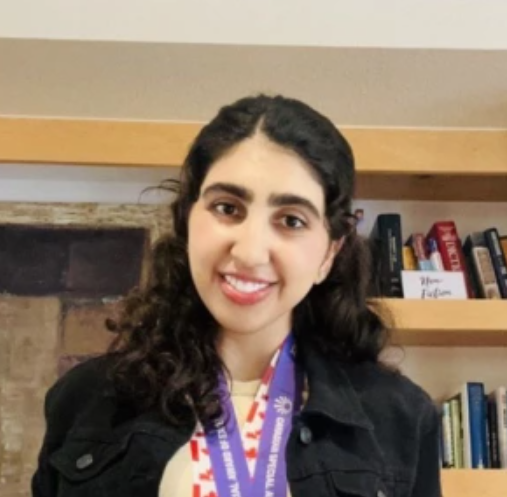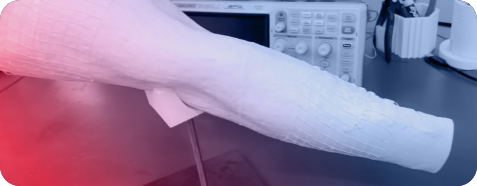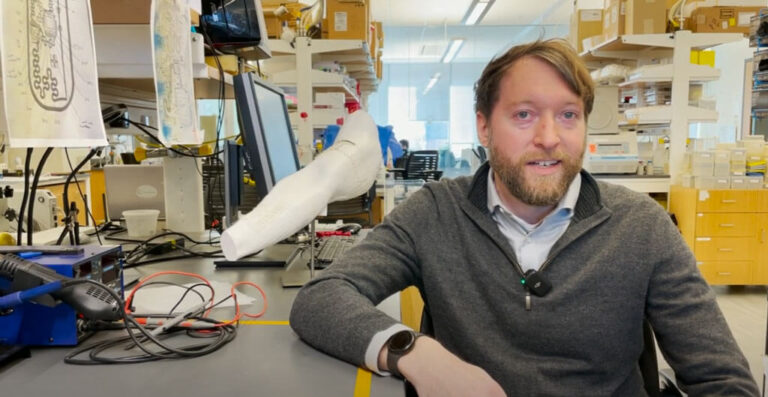Advanced battery-free wearable devices
University of Arizona researchers have developed a stretchable and intimately coupled battery-free system for infinite chronic recording of biosignals at a distance, enabling steady streams of clinical grade information for use in digital medicine.
The Problem
Progression towards digital medicine, namely early automated diagnosis, personalized therapeutics, and individualized disease management is progressing slowly due to limitations of commercially available wearable device systems. Current wearable systems fail to drive long-term user engagement due to several unfavorable aspects which include poor data
reliability, frequent user interaction, and battery recharging requirements.
The Solution
To address these challenges, our team is developing a new class of wearable device technology, which we call bio-symbiotic devices, that can achieve continuous, clinical grade bio-signal collection in a form-factor that is virtually imperceptible to the user. Our early device is comprised of a 3D-printed elastomeric structure with embedded electronic systems, avoiding reliance on adhesive application to achieve intimate, long-term conformality to the skin and facilitating continuous operation with far-field WPT . The device features on-body antenna structures with embedded, ultra-flexible electronic systems that enable multi-modal sensing capabilities with clinical grade fidelity. Fabrication of these devices will utilize patent-pending digital manufacturing techniques, wherein a 3D scan of the wearer’s body is used to enable personalized geometries for high performance application or tailored commoditized sizes for high volume devices.
The Opportunity
The opportunity exists for an experienced team to produce and market several products through appropriate medical device channels. Over 40% of the wearables market exists in the United States making this an ideal technology to launch domestically while considering other global markets during the expansion process.
Status
All elements of the IP have been developed into a prototype form which is available to see in a laboratory setting and extensive on body tests have been proven on human subjects and published in high impact peer reviewed journals. Sources, drawings, schematics and processes are documented and readily available.
Meet the Team

Phillipp Gutruf PhD
College of Engineering

Steven Wood MS, MBA
Tech Launch Arizona

Sara Sheiklary
College of Engineering
Contact us today.


